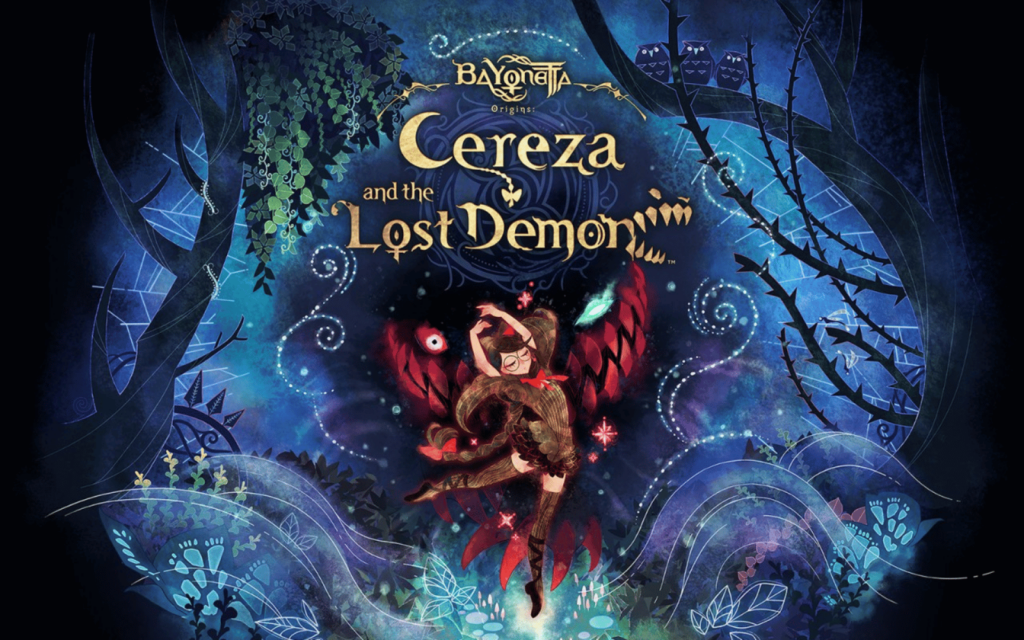Overall, we loved Cereza and the Lost Demon. We get that it won't be enough for every player - even those that are fans of the original trilogy. If you're keen to see a beautifully drawn tale of friendship and insecurity and are able to keep up with the sometimes difficult puzzles and fast-paced combat, give it a go. Or don't. We can't tell you what to do.
-
Story
-
Gameplay
-
Replayability
-
Visuals
-
Performance
When we first heard of Bayonetta Origins: Cereza and the Lost Demon, a spin-off to the Bayonetta series, we were sure it couldn’t work. For one, it barely resembles the original entries, replacing the over-the-top, gun-riddled scenario with a more fanciful, light-hearted adventure that puts puzzles and colourful illustrations at the forefront. Second, it replaces the titular character of Bayonetta with a younger, less in-control Cereza that hasn’t yet earned the moniker her guns. We approached Origins with slight reluctance, unsure of whether it could handle such a drastic change of pace while still living up to its name.
And we were… pleasantly surprised. Bayonetta Origins delivers on its promise of delivering a prequel to the AAA trilogy, introducing us to a younger and not-so-confident lead whose biggest clash is with her own insecurities. It’s a side of the witch that’s only ever been alluded to in previous games, providing a harrowing context for Cereza’s transformation to the Bayonetta the world knows. We get it – it’s not a game for everyone. We mean that both mentally and physically – a Switch is needed to even give Origins a go.
A dynamic duo

Origins follows a young Cereza, a witch borne out of a forbidden affair between her parents – a Lumen Sage and an Umbra Witch. Cereza’s mother is captured and imprisoned before her daughter’s eyes, which provides the catalyst for the entire narrative. See, Cereza’s whole goal is to become as powerful a witch as she’s capable of being to free her trapped mother. Soon after, Cereza is visited by a spirit claiming that the power and courage she seeks to become a proper witch is hidden deep in the Forbidden Avalon Forest. The burgeoning witch sets forth immediately, abandoning her mentor.
It soon becomes clear why the forest is forbidden. It’s teeming with demonic faeries that transport Cereza to a new, familiar-feeling dimension. After a botched summoning of a demon designed to protect herself, Cereza casts the demon into the body of her plushie toy, Cheshire. Inspired to help the witch grow her powers in order to send him back from whence the demon came, the pair set out on their journey.
The dynamic between the duo is the heart and soul of the game’s story, while also being what makes the gameplay as great as it is (but we’ll get to that). What begins as a companionship born out of necessity evolves, as Cheshire opens up to Cereza and Cereza to Cheshire. Despite the hard shell, Cheshire’s heart is as soft as the fabric surrounding it. It’s a relationship akin to that of any recent Pedro Pascal project (or perhaps many children’s stories), and one that we found ourselves sad to say goodbye to by the time the story closed.
Cereza is expressive from the get-go, helped along by a wonderful voice-acting performance from Angeli Wall. Her enthusiasm, often at odds with the game’s slowly darkening story and Cheshire’s early reluctance to engage, is reminiscent of a young child’s mind. It fits well with the game’s storybook vibe and was something we were glad wasn’t dismissed as the game continued. Sure, there are crucial hints that heavily focus on Cereza’s future, but none were ever glaring enough to shoo newcomers away from the series.
Double-barrel gameplay (without the barrel)

While Bayonetta Origins’ story is compelling, the game’s true magic lies at the heart of its absolutely balls-to-the-walls gameplay and combat. That’s partly because of the game’s narrative – tying Cereza and Cheshire together in every mechanic the game offers. Origins makes use of a top-down angle, rather than the standard third-person camera the Bayonetta games are accustomed to. The player is given control of both Cereza and Cheshire, with the witch assigned the left stick, with the plushie-demon assigned the right.
If that sounds confusing, it is. At least, at first. Controlling two characters is about as simple as rubbing your head and belly in opposing directions until you get the hang of the two character’s abilities. By the end, juggling both Cereza and Cheshire became second nature – barring the occasional brain fart that got us killed in combat. Fret not, Origins gives players plenty of time to adapt to the funky controls. You’ll only be dealing with simple enemies and puzzles in the game’s early chapters before things get a little more difficult.
The easiest way to describe Origin’s puzzles is to compare them to 2021’s GOTY, It Takes Two. Puzzles require both Cereza and Cheshire to accomplish traversal. Cheshire’s ability to switch forms – whether it be into Unleashed mode or Hug mode – allows the demon to change its size to fit your needs. Cereza’s magic helps to keep the plushie away from rosemary (the herb), something demons aren’t too fond of (who knew?). Despite the game’s mostly linear path, it does encourage exploration. You’ll find hidden tidbits of lore, little critters known as Wisps, and some gorgeous landmarks.
Combat is no different. Gone are the series’ original combat mechanics. Here, you’ll need to combine the powers of Cereza and Cheshire to progress through the game’s smorgasbord of enemies. Once again, Origins kicks things off with slower-paced battles that are easier to manage one character at a time. Destroy one of the four elemental cores scattered throughout the game and you’ll unlock new powers for Cheshire that help in both combat and any future puzzles you’ll encounter. There’s also a decently built skill tree to worry about because of course there is. It’s not the most in-depth skill tree we’ve seen (remember, this is a “kid’s” game) but it does unlock a few fun abilities such as dodge and charge attack.
While things certainly do become more difficult, we found that by the five-hour mark, puzzles and combat begin to wane in originality. With only a change of scenery to distinguish the same enemies and puzzles, and a lack of new abilities, the mid-game becomes a little hazy. It never made us want to put down the controller, but it was the great story keeping us going. Miraculously, Origins manages to turn things around at exactly the right moment. In the game’s closing hours, combat gets a breath of fresh air. Whether that’s due to the more frequent appearance of bosses or something else, we won’t say just yet. Just… trust us.
Bayonetta Origins: Cereza and the Lost Demon Verdict

You know that feeling when you finish a great game and can’t stop thinking about it? That’s the feeling we were left with after beating Bayonetta Origins: Cereza and the Lost Demon. Just… not in the ways you’d think. The story gripped us throughout, and as a Bayonetta newbie, left us wanting to delve deeper into the original trilogy. Everything from the music, voice-acting, and general art style often left our mouths agape. Our biggest concern lies in the period that infects the game’s middle, tediously dragging out the puzzles and combat scenarios. That isn’t the case throughout the entirety of Origins, which makes it easier to let it off the hook.




